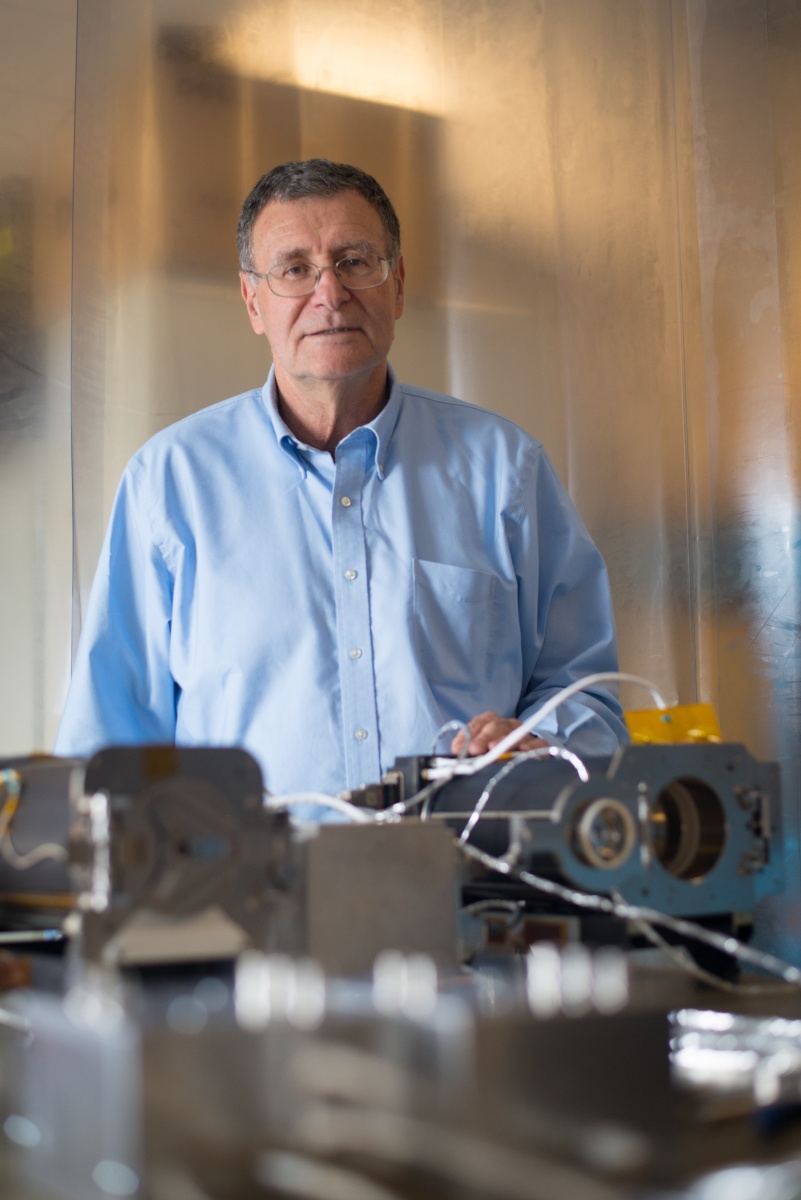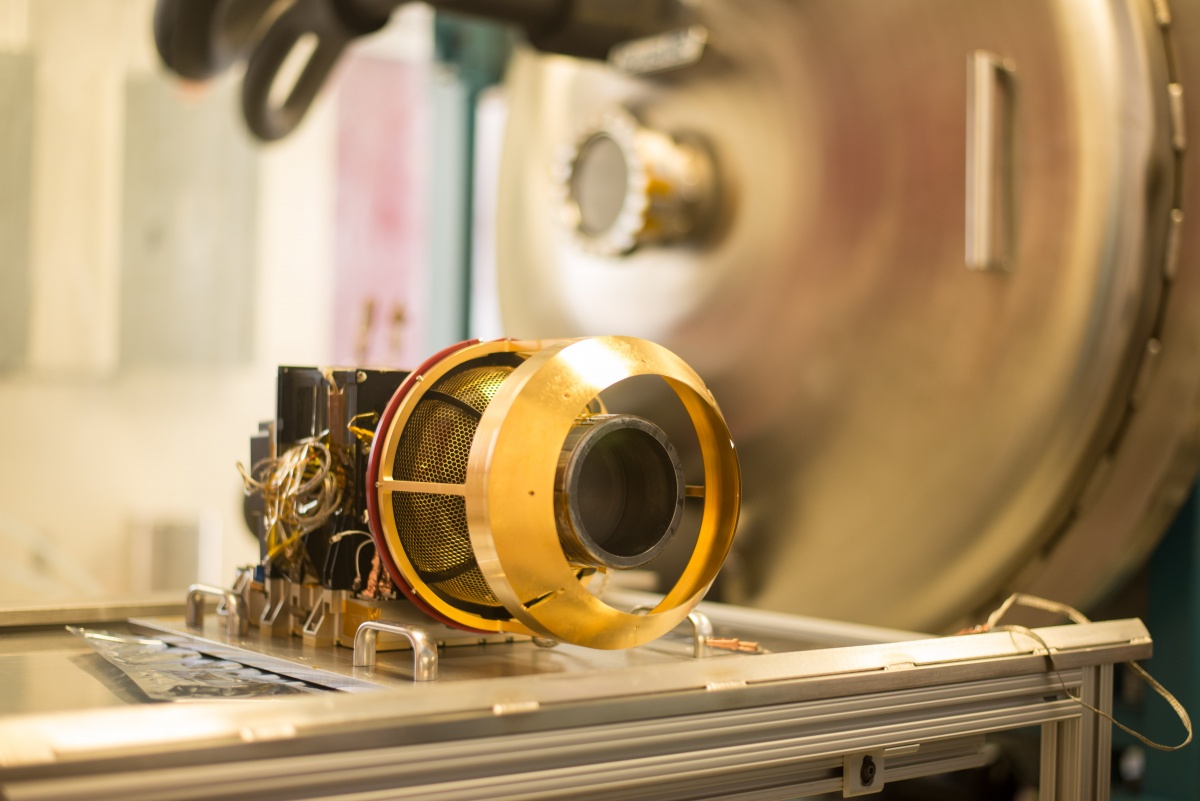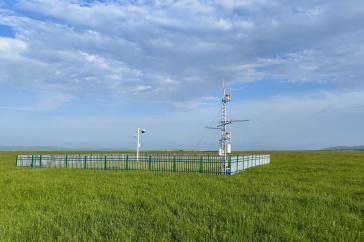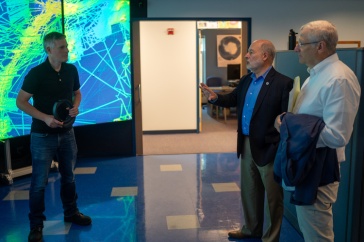On October 16, 2015, dozens of UNH scientists, space physics researchers, engineers and students made history. That’s when the four satellites of NASA’s Magnetospheric Multiscale (MMS) mission flew through an elusive magnetic reconnection event, forever changing our understanding of what powers giant explosions at the edge of the Earth’s magnetic boundary.
“This dataset is so revolutionary that I think we’ll be mining it for 50 years,” says professor of physics Roy Torbert of the information that event yielded. Torbert led the UNH team that constructed or coordinated nearly half the key instruments on each of the four satellites. “We were confident that we would be able to get some important data from the mission but to do it as quickly and accurately as we did was just amazing.”

Torbert, of the Space Science Center in the Institute for the Study of Earth, Oceans, and Space (EOS), is co-author of a hotly anticipated study in the journal Science that reports those results today. Press release
The findings are significant because magnetic reconnection is one of the most important drivers of space weather events like solar flares, coronal mass ejections and geomagnetic storms. It can affect modern technological systems like communications satellites, GPS navigation and electrical power grids, as well as the safety of astronauts in space.
Magnetic reconnections, Torbert says, are “rapid explosive events that release that energy, and we don’t understand them.” Before MMS, in fact, satellites observed the effects of magnetic reconnection but never the impetus, like seeing debris scattered from a tornado but not the storm itself. This understanding could help scientists predict these events and take measures to protect our space assets and power grids.
“By seeing magnetic reconnection in action, we have observed one of the fundamental processes of nature,” adds Jim Burch, the principal investigator for MMS at the Southwest Research Institute in San Antonio, Texas, and the first author on the Science paper.
NASA’s $1.1-billion MMS mission launched on March 12, 2015, from Cape Canaveral Air Force Station, Florida, carrying a quartet of identical satellites that fly in a tight pyramid shape to provide a three-dimensional map of its observations. At UNH, a team of nearly 40 people — scientists, engineers, managers, software developers, machinists, technicians and students — delivered a suite of six sensors per spacecraft called the FIELDS instrument suite.
"This dataset is so revolutionary that I think we’ll be mining it for 50 years."
Late in the game, the team also took over the construction of the Spin-plane Double Probe (SDP), a complex, mission-critical instrument that had fallen behind in its development. The SDP consists of 16 200-foot-long wire booms — four on each of the four spinning MMS spacecraft — with orange-sized sensors at the end that measure electric potential in the vacuum of space. NASA recently honored that team for its efforts in rescuing the SDP.
At nearly $70 million, MMS represented the largest single contract in the 60-year history of the Space Science Center, says SSC investigation project manager John Macri ’78G. “This was a huge opportunity for UNH, but it was still in our comfort zone,” he says. “The infrastructure was here, the culture was here, the talent was here.”
While the project tapped expertise like Macri’s and Torbert’s, it also nurtured the budding talents of many undergraduate and graduate students who launched careers with MMS. Research scientist Matthew Argall ‘14G, who worked on MMS as a Ph.D. student, was one of them.

“It’s been extremely exciting, both personally and professionally,” he says. “Every day I have the chance to look at something new that no one has seen before.”
On a personal level, he adds, he attended the MMS launch in Florida with 20 family members, including his grandfather, who designed the joystick navigator for NASA’s lunar rover.
The power and clarity of data from MMS caps nearly a decade of UNH dedication to the project. “The longstanding, world-class expertise of the UNH Space Science Center in space instrumentation was critical to forming our excellent international team on MMS, which contributed directly to the findings of this exciting mission thus far,” says Torbert.
-
Written By:
Beth Potier | UNH Marketing | beth.potier@unh.edu | 2-1566



















































